San Diego Comic-Con 2019 might be over, but the Marvel Rundown never stops! First up this week, Jonathan Hickman‘s revolutionary and relentlessly-hyped run on the X-Men kicks off with House of X #1! Does the title live up to the buzz?
Then, Marvel finds a place for a former Thor outside of the cinematic Universe with Jane Foster: Valkyrie #1! How does Jane’s first flight go?
Lastly, Mark Waid and Javier Rodríguez are redefining Marvel’s timeline in The History of the Marvel Universe #1! Can the creators make sense of 80 years of continuity? The answers to all of these questions await in the latest edition of The Marvel Rundown!
 House of X #1
House of X #1
Written by Jonathan Hickman
Illustrated by by Pepe Larraz
Colored by Marte Gracia
Lettered by VC’s Clayton Cowles
Design work by Tom Muller
Cover by Pepe Larraz & Marte Gracia
Alexander Jones: Samantha! Joe! One of the biggest books of the year at Marvel is finally here! What are your takes on celebrated writer Jonathan Hickman returning to The House of Ideas after a three-year gap with Marvel superstar artist Pepe Larraz for a brand new ambitious direction for the X-Men franchise? Did House of X #1 stumble out of the gate or revel in new ideas? What are your initial takes?
Samantha Puc: Guys, I have to say, I was nervous about Hickman relaunching the entire X-line until he started talking about his multi-year plan, and this weekend’s Dawn of X reveal has me buzzing. House of X #1 really solidified my trust in Hickman; diving headfirst into Krakoa and mutant rights in such a radical way is a smart move that opens up lots of doors for new, more interesting stories involving the X-Men and mutantkind. I definitely have questions about some things — like whether Xavier is really Xavier and why everyone is behaving like pod people (literally) — but I’m also ready to go on this journey. Joe and Alex, what are your first impressions?
Joe Grunenwald: I’ve not read a lot of Hickman’s work, but what I’ve read of it has been pretty heady, out-there stuff, which I thought would be perfect for a franchise like the X-Men. I can safely say that House of X #1 is unlike any X-Men comic I’ve ever read before, in the best way possible. Hickman and Larraz wipe the slate clean and just go for broke from the very first page, and I didn’t want to put this book down.
Jones: I have so many questions regarding the status quo shifts and changes with the franchise. For now, I’m going to give Hickman the benefit of the doubt with the writing itself and admire at just how incredibly ambitious this title is. There has been a stagnation with Marvel as a whole over the past couple years. We have seen lots of creators chasing their tales or attempting to relive older runs on the property. This issue finally circumvents those problems and truly presents a way forward for the X-Men. Hickman and Larraz’s debut already feels like it is out of the shadow of Chris Claremont and John Byrne only one issue in.
Grunenwald: I think a bold approach like this is what’s needed to get people excited about the franchise again. The previous reboot (less than a year ago!) was a fine, back-to-basics approach that I think worked at the time to bring things back around after having been fractured into blue, gold, red, black, whatever for so long, but I don’t know that it really got any new readers interested in the book. House of X is a dense book, but it’s also extremely new-reader-friendly, which is an impressive feat in my opinion.
Puc: I would agree with that assessment for sure. This feels like a fresh start, even with all of the history that’s clearly being referenced; there’s something for old fans and new, which will surely expand the readership and accomplish Hickman’s goal of returning the X-Men to a more prominent space within the Marvel Universe. I am also deeply, deeply impressed with how hard he’s leaning into mutant rights, especially with characters like Scott, Magneto and Xavier… who I’m still convinced isn’t actually Xavier. Can we talk about that?
Grunenwald: I’m not familiar with the Astonishing X-Men run where he returned, so I don’t know that I can add much to that, but Alex probably can. I did enjoy that we only see him on a few pages at the beginning. Xavier and his mysterious plans are essentially a spectre that looms over everything in the book, even if he’s not physically there. I thought that was brilliant.
Jones: It is almost frustrating how little we know about him. I am dying to figure out what is going on pertaining to Xavier but I know that we are not supposed to know yet. Hickman is already playing the long game. The fact that I have read years of X-Men comics and am still so joyful confused is the truly ASTONISHING part of my reading experience here. This is a weekly series (between the two titles) and there is a lot of ground to cover so I’m not panicking yet.
Puc: Hickman is definitely playing the long game, which is great. The fact that Marvel’s letting him is great, too. I’m all for a mini-series, but comics are designed for longform storytelling and I’m excited to see that in House of X, Powers of X, Dawn of X and beyond. I think the reason I keep getting stuck on Xavier is threefold: the ratio of helmet (which may be a Cerebro unit!) to body, the way everyone is acting like a pod person, and the fact that there are literally people being birthed from pods. It makes me question the legitimacy of everything, which is cool — keeps me on my toes.
Grunenwald: The structure of this all lends, for me, an air of importance to it. Every X-book just stopped last week, which is bananas. This feels Big and Important and not like something that will be wiped away in a year’s time for another relaunch or reboot. And Sam, I could absolutely see there being some sort of brainwashing involved if not for the fact that we just came off of everyone having been brainwashed in Age of X-Man. I can’t wait to find out more about what he’s been up to and how we got to where things are as House of X begins. We’ve talked a lot about different story elements, but not really about the issue as a whole. How did the structure of the issue work for you two, script-wise and in terms of the visuals (not necessarily just the artwork)?
Puc: I’m not even referring to brainwashing! I think there’s something here to do with Krakoa, the seeds that are being sent out with issues, the honeycomb-like-pods… GROWTH is a theme here, and it makes me question… everything. Anyway. I really enjoyed how this issue was split between traditional panels and then documentation in place of exposition.
Jones: It is difficult for me to assess the issue as a whole because it is so obvious that this is the first five minutes of a film as opposed to a feature-length graphic novel. I really enjoyed the extra graphic design elements and how they broke up the structure and flow of the story. I think my biggest criticism regarding the issue as a whole is how much ground Hickman has to cover. I don’t have a great handle on just who or what Damage Control, the different types of drugs and Orchis is yet. Hickman just barely scratched the surface of these heady concepts and the revolutionary idea of Krakoa. I have grown bored of Big Two comics that don’t tackle heady ideas so I definitely prefer this structure, but I don’t think this is a fantastic debut. This chapter piqued a level of curiosity that few superhero comic books have given me.
Puc: I think Hickman covered plenty of ground and presented the exposition and background in an interesting way that doesn’t take us out of the story. In a longform story, it wouldn’t make any sense for everything to be established right off the bat, so if anything, I think that makes this debut stronger.
Grunenwald: I agree that there is a lot of setup in this issue, but I didn’t have a problem with it at all, and I actually found it to be a really compelling standalone piece. The question of who was analyzing who was played perfectly, and the ‘tour’ of the embassies was a nice analog to the tour readers were getting of this brave new world for mutantdom. As I said before, this is a dense comic, and it’s also pretty long, so the inclusion of Tom Muller‘s incredible infographics to break up the different chapters was an inspired touch. Those pages got across a lot of information in a relatively short space and helped guide the reader through the issue, and I thought they worked really well. And you’re right, Alex, that Hickman has barely scratched the surface on things, which is saying something given just how much there is in this book. I also thought Pepe Larraz and Marte Gracia did a beautiful job on the artwork. I’d say it still falls within Marvel’s overall house style, and it would’ve been interesting to see an artist with an even more ‘out there’ look work on this book, but Larraz and Gracia’s work is great, and I think that house style feel helps ground this book in the Marvel U, which in a way makes it even more impressive.
Jones: If Pepe Larraz is considered ‘House Style” I no longer consider ‘House Style’ to be a bad thing. Marte Gracia’s beautiful, vibrant color and Larraz’s vivid landscapes made Krakoa look beautiful. The pacing and aesthetics of Tum Muller’s designs broke up the flow of the issue nicely. I think this is a title that has a couple aspects of Image titles in terms of the flow and design. Larraz also packs a ton of Mutants on the page without ever making the panels feel crowded. From a visual direction, I couldn’t be happier with the title and I’m thrilled that Gracia is also coloring Powers of X to keep the flow of both titles intact.
Puc: This creative team is perfect for the subject matter. The entire issue feels like a piece of high art, which is uncommon for a book about superheroes. I’m definitely into it.
Jones: I wish we could have gotten a double-sized opening chapter and I wish Hickman would have explained these concepts a little more thoroughly. I also hope other titles across The Marvel Universe are influenced by this story and we see more titles across the line at Marvel taking even more chances. I also really appreciated the fact that this issue carries a cliffhanger that is really emotionally powerful.
Puc: It was 51 pages, Alex! Haha, how many pages were you hoping for? Hickman has said that each issue of POX will make the preceding issue of HOX make more sense, since the former is the past and the latter is the future.
Jones: Getting a series introducing such a complicated status quo only one issue at a time is a difficult to way to engage with a narrative like this (thankfully the next issue is out next week!) Also, the issue was broken up with lots of infographics and didn’t carry a full 51-page run time. The added context in the infographics were helpful and lent a lot to the overall story.
Grunenwald: I didn’t particularly find the narrative difficult to engage with, though I enjoy stories where readers are dropped into the middle of things and left to figure out what’s going on, so long as enough information is presented that readers are able to do so. I felt House of X #1 did that really well through a combination of the sequential pages (there were 34, so maybe not double-sized, but still more than a standard issue) and the infographic/text pages.
Puc: I guess it’s hard to parse the argument that the infographics can’t count toward story and page count if you’re also saying that the infographics contributed to the story. Just because a page doesn’t have traditional panels or isn’t a double-page splash, that doesn’t mean it’s not part of the story, at least from where I’m sitting. I love that kind of creative license in comics; in fact, I think going for broke and really playing with presentation can elevate comics in cool ways when done well — which is absolutely the case in House of X #1.
At any rate, I think the groundwork Hickman lays here is solid and the art does an incredible amount of heavy lifting, as does the layout and design. These are the mutants as we’ve never seen them before; that much is clear.
Grunenwald: I don’t mean it to sound like I don’t count the infographic/text pages – I actually find them essential to the issue.
Puc: That was moreso in response to Alex’s comments about the infographics and page count; I agree that they’re essential, both for story and frankly, for aesthetic.
Grunenwald: Yeah, they really go a long way towards establishing the overall look and feel of the book. And they convey the information way more interestingly than straight-up exposition would have. Are we ready to render our verdicts on this beast?
Puc: It’s probably pretty obvious, but this is 100% a BUY from me.
Jones: I’m going with a BUY verdict here as well. I assume that this is a series that will pay off story threads in future installments.
Grunenwald: This is a challenging comic, but in the way that I want comics to be challenging, filled with new concepts and spins on existing character, and challenges to the form itself. I can’t wait to read more of Hickman’s take on the X-Men. This is an unequivocal BUY.
Final Verdict: The next evolution of the X-Men franchise gets a unanimous BUY verdict from Joe, Samantha and Alexander!
 Valkyrie: Jane Foster #1
Valkyrie: Jane Foster #1
Written by Jason Aaron & Al Ewing
Illustrated by Cafu
Colored by Jesus Aburtov
Lettered by VC’s Joe Sabino
Cover by Mahmud Asrar & Matthew Wilson
Reviewed by Samantha Puc
After Marvel Studios presented its Phase 4 lineup in Hall H on Saturday, my thoughts have essentially been a constant whir of Jane Foster, Tessa Thompson‘s Valkyrie, and Thor: Love and Thunder. Thus, it’s perfect that Jane Foster: Valkyrie #1 hits shelves this week, because it’s exactly the kind of content I’m craving — and it really, really hits the spot.
Written by Jason Aaron and Al Ewing, Jane Foster: Valkyrie follows the slaughter of the valkyries during Marvel’s War of the Realms event. Jane is the last Valkyrie left, and that comes with a burden of responsibility she doesn’t quite understand yet. It’s not the same as being Thor, and it’s certainly not the same as being a human doctor. She realizes this quickly when what should be a simple fight with a group of armored streamers hellbent on hijacking a weapons transport becomes a hunt for one of the streamers, who got away with Brunnhilde’s sword, Dragonfang.
Unfortunately, Jane’s attempts to find the sword are met with several complications, all of them deadly. Add that to her problems at the hospital, and one could say she’s having a particularly terrible day.
This issue is beautifully paced. Joe Sabino’s lettering effortlessly marks the transition from Jane’s internal monologue to her speech as Valkyrie to her speech as herself. Cafu’s art is dynamic, action-packed and balanced, especially with Jesus Aburtov’s colors gracing the page. Likewise, the script is compelling and works perfectly in tandem with the art and design. Nothing feels out of place — not even the surprise villain who makes an appearance at the end of the issue.
Jane stepping out of the Realm-War and into this new reality means exploring a new powerset, a new weapon (Undrjarn the All-Weapon), and a new series of complications that could be her downfall… but probably won’t be, because Jane is powerful as hell. This issue highlights that power, as well as her determination, which is key to her success in whatever role she assumes within the Marvel Universe.
I loved this book from cover to cover and the cliffhanger made me scream out loud. My final verdict is definitely, unequivocally: BUY.
 History of the Marvel Universe #1
History of the Marvel Universe #1
Written by Mark Waid
Pencilled and Colored by Javier Rodríguez
Inked by Álvaro López
Lettered by VC’s Joe Caramagna
Cover by Steve McNiven, Mark Farmer, & Sunny Gho
Reviewed by Joe Grunenwald
In 1986, fresh off the multiverse-destroying Crisis on Infinite Earths, DC Comics published The History of the DC Universe. Written by Marv Wolfman and illustrated by George Pérez, the two issue prestige format series recounted key events from the history of the now-consolidated single Earth of the DC Universe, from the beginning of time until the far future. Framed as a new set of Monitor tapes being recorded by Harbinger, the format of the series was that of blocks of text by Wolfman accompanying lush illustrations of important characters and moments by Pérez.
The History of the Marvel Universe owes a lot to its forerunner from the distinguished competition. Writer Mark Waid and illustrators Javier Rodríguez and Álvaro López present, as promised in the title, the history of the Marvel Universe, with the first issue starting at the end of time before jumping back to the big bang and progressing, based on the final event represented, into roughly the 1880s. Illustrations by Rodríguez and López are accompanied by captions describing the characters and tableaus presented. This might sound like a dry read, but The History of the Marvel Universe #1 is anything but.
Waid’s script for this comic is subtly masterful. The narrative of the issue is framed as a story being told at the end of time by the universe’s oldest inhabitant, a being who was there at the beginning, Galactus. The devourer of worlds is talking to the only other living being in the universe, Franklin Richards, who is set to inherit the new universe to come after Galactus’s death.
After two pages setting up the premise (and those pages are gorgeous, both script-wise and visually), the creative team dives into the history lesson that, miraculously, combines elements from tens of thousands of different comics produced by thousands of different creative teams over the course of 80 years into one coherent timeline. Waid’s captions are brief and to the point, conveying enough information to get across the context of what’s being shown by Rodríguez and López. In the brief moments when the narration returns to first-person for Galactus’s own origin, Waid humanizes the character with a skillful degree of simplicity. Joe Caramagna’s lettering work presents Waid’s words in a way that’s not flashy and doesn’t distract from the casual gravity of the events being described or the imagery that represent those events.
And make no mistake: the imagery is what you’re here for. The History of the Marvel Universe is basically a vehicle for Rodríguez and López to go all-out, balls to the wall with iconic characters and moments from the Marvel U, and the first installment, in chronicling the earliest moments of the universe, give the two artists some of the most vivid, wildest material to work with. The team presents alien races, Celestials, gods, Eternals, and humans with breathtaking spreads that demand readers take the time to examine every last detail. Rodríguez’s layouts are incredible as always, the artist using every millimeter of space on the page and filling it with visual information. In instances where panel borders are present, Rodríguez seems barely to be contained by them, elements and characters springing out of the frames and off the page effortlessly.
López’s inks complement Rodríguez’s linework without overcomplicating it, adding depth and texture to already great work. The color work from Rodríguez is also absolutely beautiful, from the two-color palette of the opening pages to spreads that seem to overflow with color and life. With all respect to Waid and Caramagna’s work, I would love to see a version of this comic without the words, so that I could soak in the entirety of the artists’ work. This is, hands down, the book that solidifies Rodríguez and López as one of the premier art teams in the business.
The History of the Marvel Universe #1 is the complete package. Waid accomplishes the gargantuan feat of coherently integrating 80 years of continuity, and establishes an emotional core to what might otherwise have been a bland recounting of events. He also smartly stays out of the way and lets the work of Rodríguez and López shine through as the star of the book. And this first issue doesn’t even feature many of the Marvel characters that fans know and love. I’m excited to see what this creative team does once Captain America and the Invaders arrive, or once the Fantastic Four first appear and the Marvel Age begins. If this first issue is any indication, the rest of this series is going to be a thing of beauty.
Final Verdict: BUY.
Next week we meet the other half of Jonathan Hickman’s grand X-Men franchise with Powers of X #1!


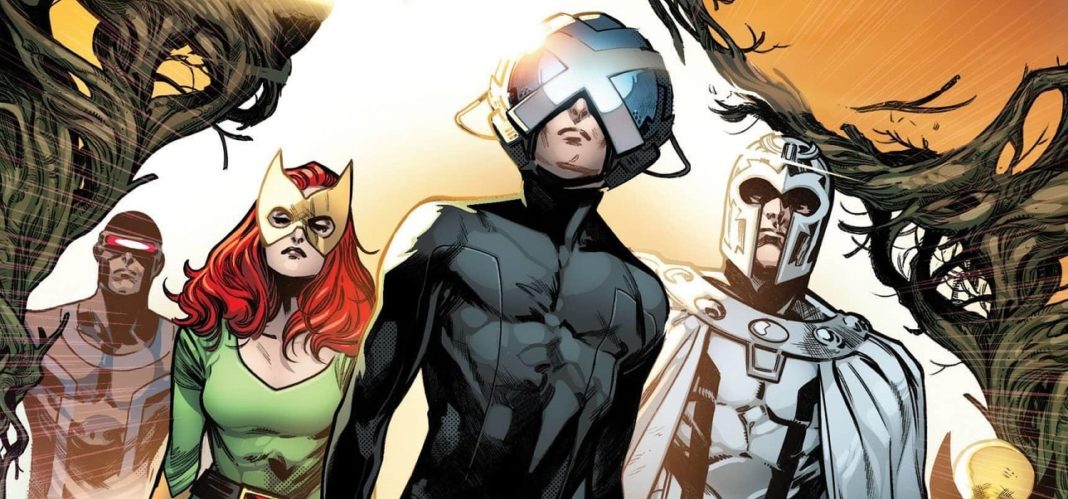
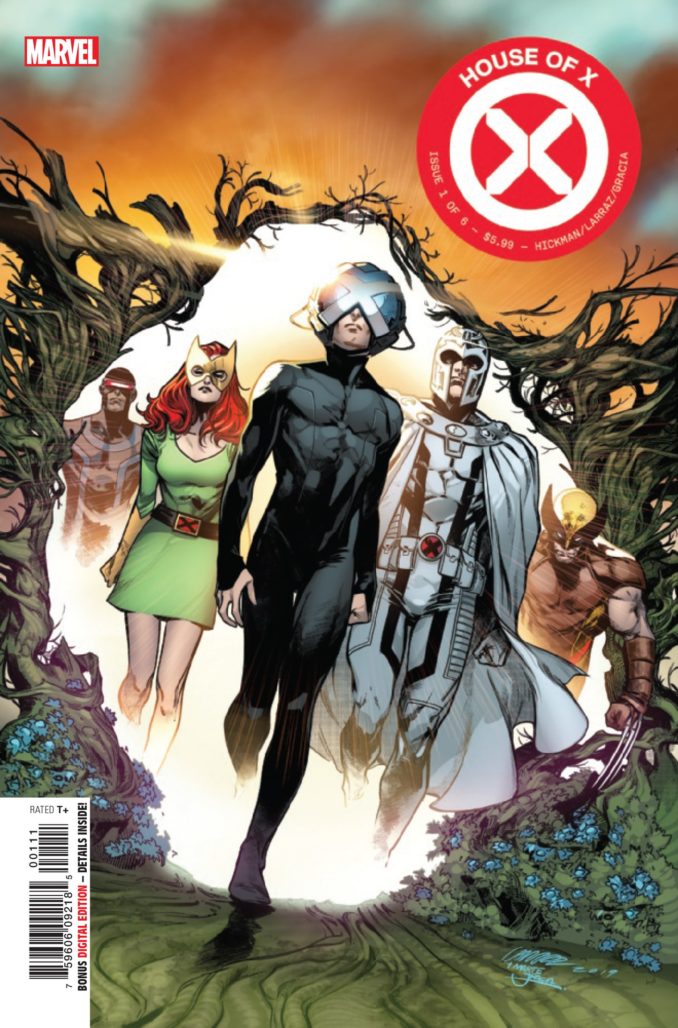 House of X #1
House of X #1
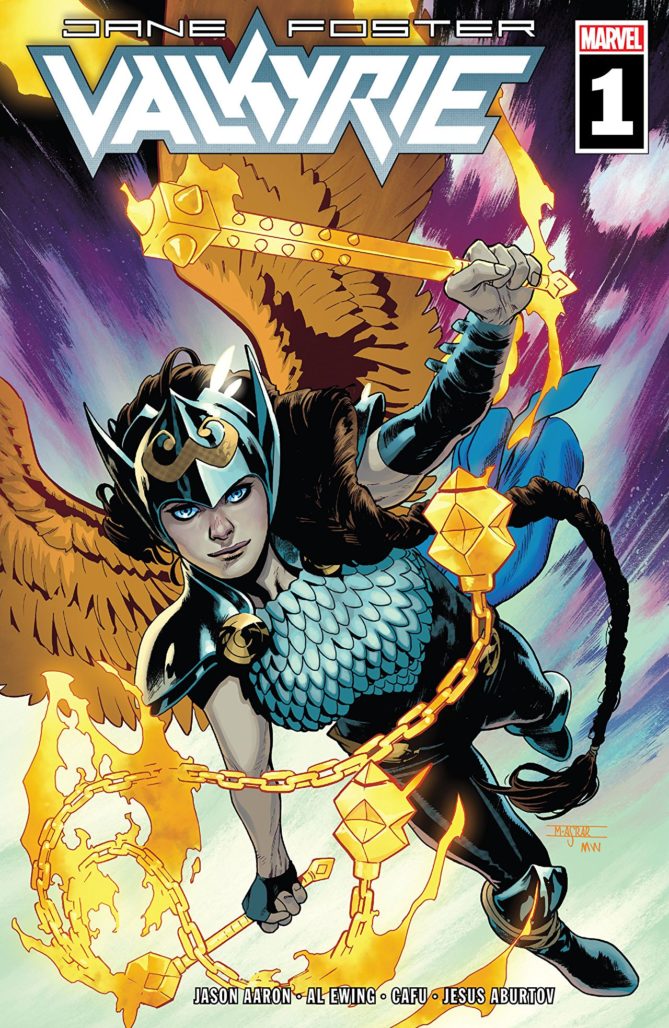 Valkyrie: Jane Foster #1
Valkyrie: Jane Foster #1
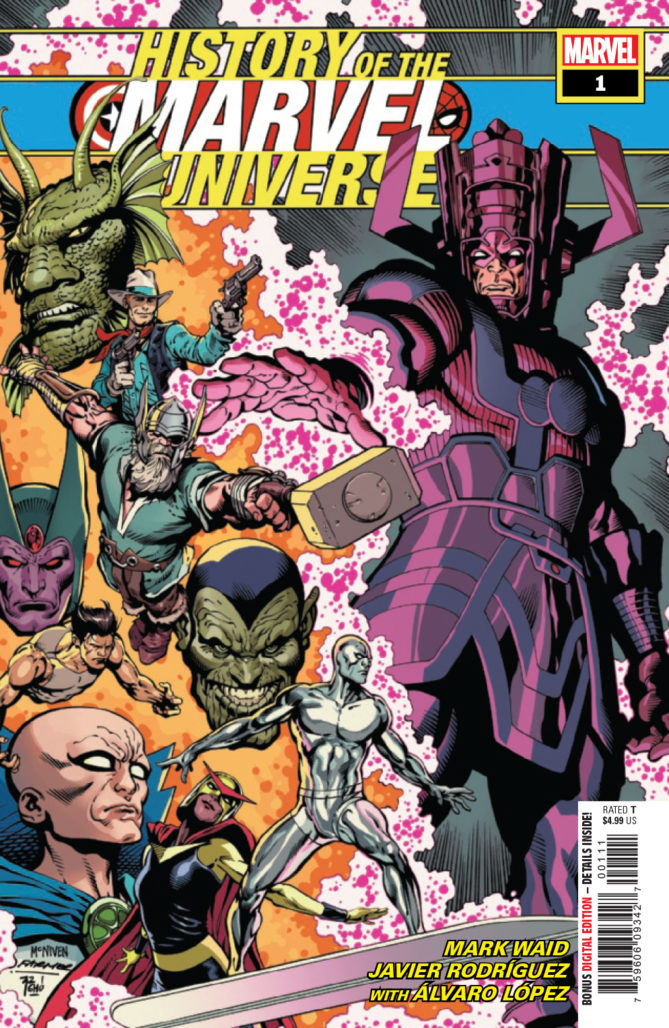 History of the Marvel Universe #1
History of the Marvel Universe #1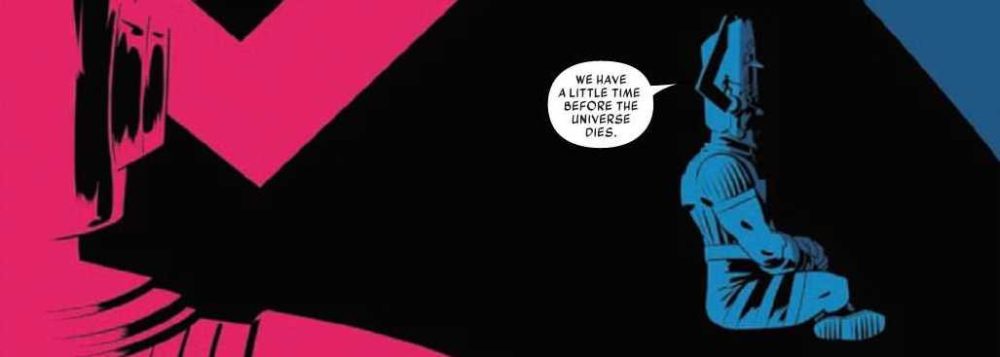
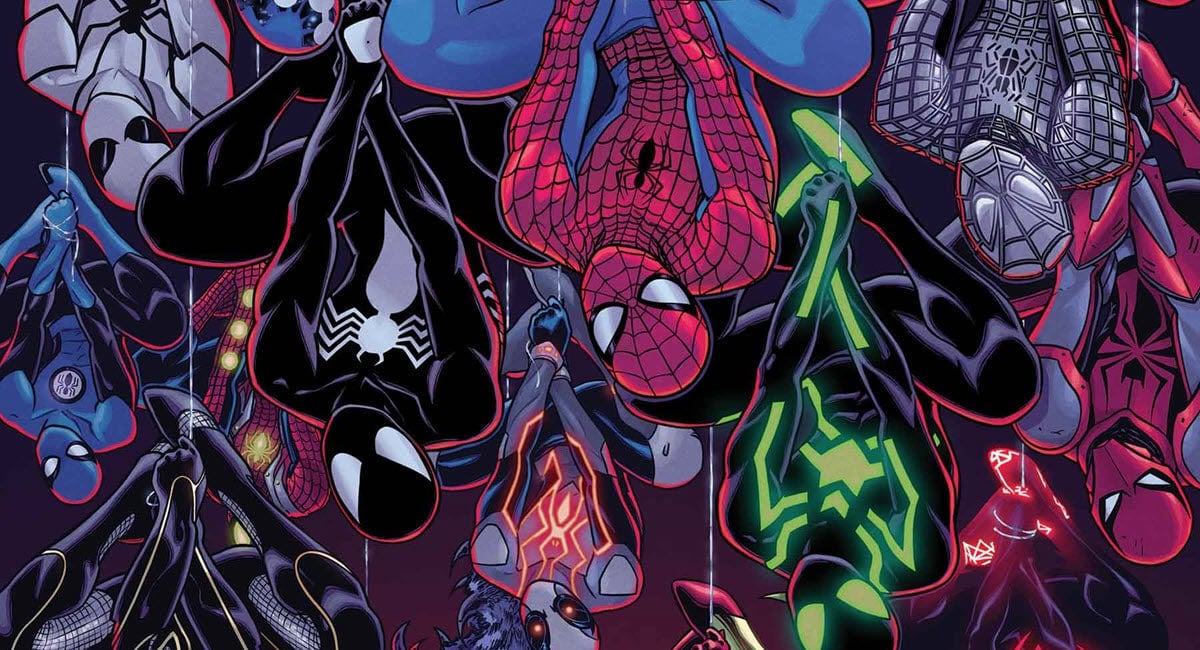




Alex, while Orchis and the “drugs” are new introductions for the series, Damage Control has been around since ’88. It was created by the great Dwayne McDuffie as an explanation for how the messy aftermath of superhero fights get cleaned up, and was even featured in the MCU via Spider-Man: Homecoming.
I absolutely loved the issue, and even though it was certainly an introduction and “start here” point, I also read it as a continuation of Hickman’s marvel work from FF and Avengers. The scene where Cyclops stands off against the Richards family felt like a shift of consciousness — from old school nostalgia to new age futurism.
It will certainly be interesting to see how the Mutants (or should we call them Krakoans now?) are seen through the lens of the rest of the Marvel U.
I never identified Damage Control as a new concept.
Comments are closed.